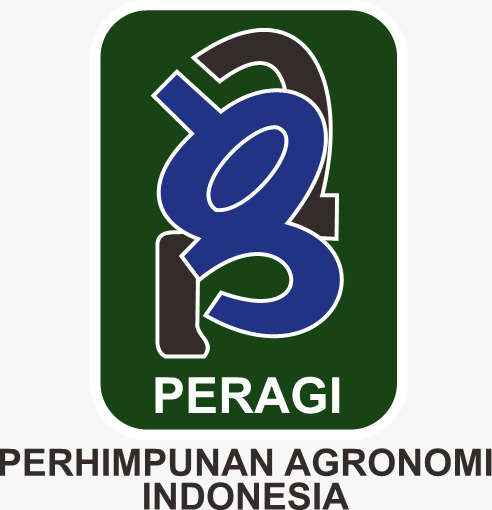Study of Types and Doses of Fish Waste LOF on the Growth and Yield of Soybean Plants (Glycine max (L) Merrill)
Abstract
Soybean is a promising crop that requires further development due to its significant market potential both locally and for export. Soybean cultivation is not widespread in South Sumatra, and production levels remain low. One strategy to enhance production is to utilize fish waste to create liquid organic fertilizer (LOF) by optimizing the type and dosage of fish waste used. This research aims to identify and determine the most suitable type and dosage of fish waste LOF for promoting the growth and yield of soybean plants. This study was conducted on a farmer's land on Jl Sukarela KM 7, Sukarami District, Palembang City. A field experiment method was employed, utilizing a split-plot design. The first factor (main plot) consisted of the type of fish waste LOF, which included a control group, LOF from marine fish waste, and LOF from river fish waste. The second factor (sub-plot) is yet to be detailed. The dosage of LOF fish waste was 10.0 ml/L, 200 ml/L, 300 ml/L, and 400 ml/L. The observed variables included plant height (cm), flowering age (days after planting), number of productive branches, number of pods per plant, number of filled pods, seed weight per plant (g), weight of 100 seeds (g), and seed weight per plot (g). The study results were obtained by tabulating the combinations of different types of liquid organic fertilizers derived from marine fish waste. The dosage of 300 ml/L yielded the highest soybean production, which was 451.00 g/plot, equivalent to 1.80 tons/ha.
Downloads
References
Alex, S. (2012). Sukses mengolah sampah organik menjadi pupuk organik. Pustaka Baru Press.
Ardian, Yoseva, S., Naibaho, A. P. S., & Pramana, A. (2023). Peningkatan pertumbuhan dan hasil tanaman kacang tanah (Arachis hypogaea L.) dengan pengolahan tanah dan pupuk organik cair limbah ikan. Juatika (Jurnal Agronomi Tanaman Tropika), 5(2), 453–467.
Badan Pusat Statistik Provinsi Sumatera Selatan. (2023). Produksi palawija (ton), 2021–2023. https://sumsel.bps.go.id/indicator/53/400/1/produksi-palawija.html
Endriani, Ghulamahdi, M., & Sulistyono, E. (2017). Pertumbuhan dan hasil kedelai di lahan rawa lebak dengan aplikasi pupuk hayati dan kimia. Jurnal Agronomi Indonesia, 45(3), 263–270.
Hadisuwito, S. (2012). Membuat pupuk organik cair. Agro Media Pustaka.
Hanafiah, K. A. (2010). Rancangan percobaan. Rajawali Press.
López-Gómez, J. P., & Venus, J. (2021). Potential role of sequential solid-state and submerged-liquid fermentations in a circular economy. Fermentation, 7(2). https://doi.org/10.3390/fermentation7020076
Made, U., Syamsiar, & Astuti, R. P. (2023). Pertumbuhan dan hasil tanaman kedelai (Glycine max L.) pada pemberian berbagai dosis pupuk guano dan konsentrasi POC. Jurnal Agrotekbis, 11(3), 674–684.
Murdaningsih, & Rahayu, P. S. (2021). Aplikasi pupuk organik cair limbah ikan pada tanaman mentimun (Cucumis sativus L.). AGRICA: Journal of Sustainable Dryland Agriculture, 14(1), 1–10.
Nisa, C. (2021). Pengaruh konsentrasi pupuk organik cair (POC) limbah ikan laut terhadap pertumbuhan dan hasil tanaman mentimun (Cucumis sativus L.) [Skripsi, Universitas Siliwangi].
Novizan. (2005). Petunjuk pemupukan yang efektif. Agro Media Pustaka.
Nugroho, P. (2017). Panduan membuat pupuk kompos cair. Pustaka Baru Press.
Ramadhani, E., Refnizuida, & Zihono, M. F. (2022). Aplikasi limbah pencucian ikan dan rumah tangga terhadap pertumbuhan dan produksi tanaman kacang panjang (Vigna sinensis L.). Jurnal Triton, 13(2), 141–148.
Rohima. (2020). Pengaruh pupuk organik cair limbah ikan terhadap pertumbuhan dan hasil kedelai edamame pada tanah aluvial [Artikel ilmiah, Universitas Tanjungpura].
Rosmarkam, A., & Yuwono, N. W. (2011). Ilmu kesuburan tanah. Kanisius.
Setiani, W. (2014). Pengaruh jenis dan waktu pemberian bokashi terhadap pertumbuhan dan hasil tanaman jagung manis (Zea mays L. saccharata Sturt.) varietas super sweet. Jurnal Agrifor, 13(2), 223–230.
Sultoniyah, S., & Pratiwi, A. (2019). Pengaruh pupuk organik cair limbah ikan nila (Oreochromis niloticus) terhadap pertumbuhan tanaman bayam hijau (Amaranthus viridis L.). Symposium of Biology Education (Symbion). https://doi.org/10.26555/symbion.3513
Sutriana, S., Ulpah, S., & Baharuddin, R. (2022). Land productivity of the intercropping shallot (Allium ascalonicum L.) and chili pepper (Capsicum frutescens L.) with liquid organic fertilizer and solid organic fertilizer. Juatika (Jurnal Agronomi Tanaman Tropika), 4(1), 37–47.
Turmanto, Sepriani, Y., & Rizal, K. (2021). Respon pertumbuhan tanaman kedelai (Glycine max L. Merril) dengan pemberian POC limbah ikan dan solid. Jurnal Agroplasma, 8(2), 36–45.
Waryanti, A., Sudarno, S., & Sutrisno, E. (2013). Studi pengaruh penambahan sabut kelapa pada pembuatan pupuk cair dari limbah air cucian ikan terhadap kualitas unsur hara makro (CNPK). Jurnal Teknik Lingkungan, 2(4), 1–7.
Zahroh, S., Kusrinah, S. M., & Setyawati. (2018). Perbandingan variasi konsentrasi pupuk organik cair dari limbah ikan terhadap pertumbuhan tanaman cabai merah (Capsicum annuum L.). Journal of Biology and Applied Biology, 1(1), 50–57.
Copyright (c) 2025 Nurbaiti Amir, Berliana Palmasari, Nopa Aprianti, Sutarmo Iskandar, Dali, Ida Aryani

This work is licensed under a Creative Commons Attribution 4.0 International License.
Authors who publish with Jurnal Agronomi Tanaman Tropika (JUATIKA) agree to the following terms:
Authors retain copyright and grant the Jurnal Agronomi Tanaman Tropika (JUATIKA) right of first publication with the work simultaneously licensed under a Creative Commons Attribution License (CC BY 4.0) that allows others to share (copy and redistribute the material in any medium or format) and adapt (remix, transform, and build upon the material for any purpose, even commercially) with an acknowledgment of the work's authorship and initial publication in Jurnal Agronomi Tanaman Tropika (JUATIKA).
Authors are able to enter into separate, additional contractual arrangements for the non-exclusive distribution of the journal's published version of the work (e.g., post it to an institutional repository or publish it in a book), with an acknowledgment of its initial publication in Jurnal Agronomi Tanaman Tropika (JUATIKA). Authors are permitted and encouraged to post their work online (e.g., in institutional repositories or on their website) prior to and during the submission process, as it can lead to productive exchanges, as well as earlier and greater citation of published work.







 More Information
More Information



